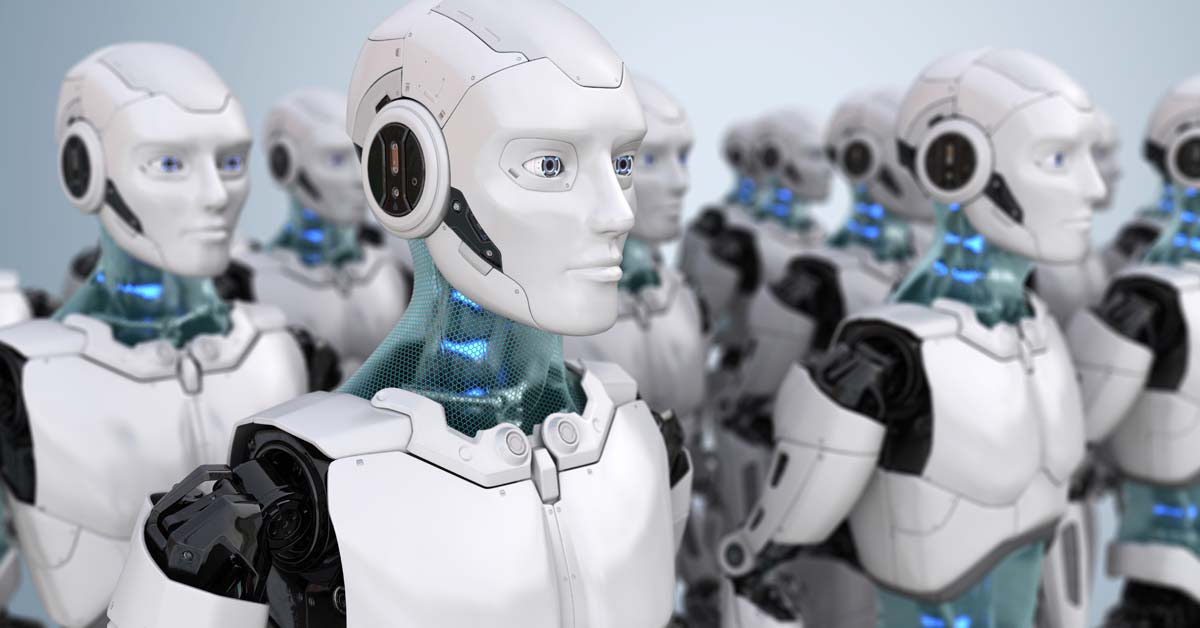It has long been an accepted tenet that most important IT developments (not simply academic ideas, important though they are) have been led by the oldest twin drivers of our human civilization – war and sax(ophone)**.
The former driver of course is represented by the ‘military-industrial complex’ and targets the key military requirements from each service of carrying, searching, guarding, building and of course killing (or neutralizing, targeting etc for the squeamish). The other driver, represented by the huge global prawnography** industry, was directly responsible for many early developments in image compression (which eventually gave us online movies etc) and secure (ish) electronic payments, which gave us online shopping (hallelujah).
Reprehensible or distasteful as you may find either (or both) of these ‘clients’, have no doubt that they are among the most important drivers which are leading the way to making the next generation of lifelike AI-driven robots and androids a common occurrence for the whole of society. Robots and ‘dim’ androids are being built right now to perform these military functions as well as (or better than) squadies, pilots or naval ratings. And as for the more personalised, direct-sensory input, positive-feedback types, well I’m sure we can all guess what the prawnography** industry might have planned there...
However, in the same way that nuclear war defensive preparations by the military spawned the internet, and the successors to hunter-killer drones are now becoming used for search & rescue or global warming research, so the prawn**-adapted droids with enhanced ‘personality’ (even pseudo-empathy) could be the forerunners to a brand new, growing global market with a potential spending power which could dwarf even the military – namely, our ageing population.
New Solutions to Elderly Problems
Since the mid-nineteenth century, the march of economic developments, hygiene and medical advances have led to not only a population explosion at the low end, but an ageing one at the other end. Even all the wars and odd massive famine (Russia and India in the 20thC were ten times Ethiopia in the 1980s) have only been a ‘blip’ in that rise. Since WW2, this economic improvement has everywhere been accompanied by the demise of the old mutually-supporting ‘extended family’ which served every generation from the cave-dwellers up to my parents – and this trend is as true in any industrial country from semi-communist China to the good old US of A.
Given that most of us in the UK will not be able to afford to live next to granny, or if grandad is on another damned continent (or the other side of the M25; same difference), the care of 60+ oldies like me (or the “Nearly Dead” in demographic shopping terms) is going to become an increasing burden on someone. So, if they are not to overwhelm our human-operated services what if we start thinking about adapting the first generation of ‘killer/saxobots**’ to something like:-
- Android nurses in hospitals to do the basic checks and simple trolley-pushing (surgeons etc are coming a bit later). Or just sit and listen.
- Driverless or robot-chauffeured cars, to keep a degree of independence – and safety – a little longer.
But Why Stop There?
Let us look beyond the simple ‘fetch and carry’, plus the bit of thermometer-jabbing and pill-flinging (actions which absorb much of the time at the moment). What about the possible beneficial effect on mental health, the quiet killer? What if we...
- Introduce home-based ‘companions’ to both monitor and provide services in the familiar surroundings of the family home, checking habits as well as medication. This will be useful as NHS beds are squeezed and current scandal-ridden care homes become financially unviable as the supply of slave (sorry, I meant Slav) labour dries up.
- Use ‘augmented reality’ viewing equipment to perhaps recreate scenes from their youth, go on holidays with the housebound, or hold parties with avatars of those unable to attend in person (a sort of ‘GoTo Meeting 3D’).
A true android ‘companion’ would be able to fight loneliness, stimulating mental acuity to help delay the onset of dementia. They may also help by analysing those regular repeats of interminable stories from yesteryear, spotting not just the usual embellishments but critical changes in language which might alert the MedSystem (Cosmos IV?) to the start of memory deterioration...and so on.
To close then, do please bear in mind that this year’s robot weapon (or saxo** toy) may be the precursor of the last, tireless best friend many will ever have...
Psst – BTW, Don’t Let The Robots Hear You, But...
**As an illustration of the onward march of AI into our lives, the reason that this article contains a number of strange references to ‘prawns’ and ‘saxo’ is not a thinly veiled attack on the fishing or music industries. It is simply that (as many of you will have deduced by now), lots of spam and other internet filters use crude AI techniques to ensure that only real armies and professional criminals can use references to ‘saxo and violins’. If I had not edited the original draft, it is quite likely that some readers would be unable to view this page, and it could have even resulted in the Optima website being blacklisted by overzealous network filters. Fortunately, the stupid AIs (and even stupider humans) behind this auto-censorship lack the human senses of sound-alike and word-play. For now...
